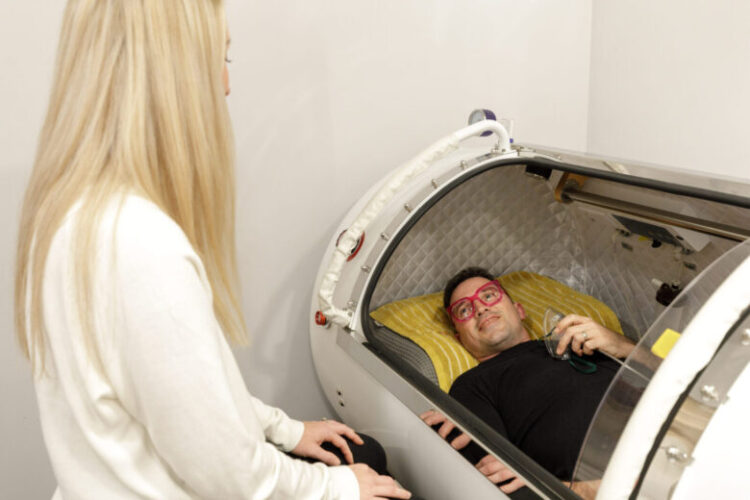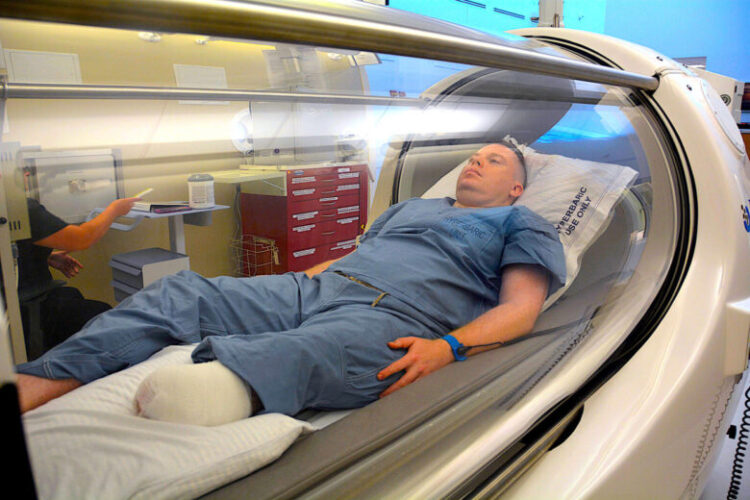Hyperbaric oxygen therapy (HBOT) has emerged as a significant medical treatment, offering benefits for a range of health conditions. This therapy involves breathing pure oxygen in a pressurized room or chamber, known as hyperbaric chambers.
The efficacy of HBOT is closely linked to the frequency of therapy sessions, which can vary widely depending on the condition being treated and the individual’s response to therapy. Today, we want to discuss how often you should undergo this therapy, according to doctor’s recommendations. WIthout further ado, let us begin
Exploring Hyperbaric Oxygen Therapy
Hyperbaric Oxygen Therapy (HBOT) is a medical treatment that involves breathing pure oxygen in a pressurized environment, typically inside hyperbaric oxygen chambers. These specialized chambers, also known as hyperbaric chambers, can be found in medical facilities and are designed to increase atmospheric pressure, allowing the body to absorb higher levels of oxygen.
This increase in oxygen supply can accelerate the healing process of damaged tissues, improve infection control, and enhance the overall recovery of various medical conditions.
What Are the Benefits?

The benefits of Hyperbaric Oxygen Therapy (HBOT) are far-reaching and have been a subject of extensive research and clinical observation. Primarily, HBOT is acclaimed for its remarkable ability to enhance wound healing.
By delivering a high concentration of oxygen to the blood, HBOT increases the amount of oxygen that reaches damaged tissues, thereby speeding up the healing process. This aspect is particularly beneficial for chronic wounds, such as diabetic foot ulcers, which may not heal effectively with traditional treatments.
Another significant advantage of HBOT is its efficacy in fighting certain types of infections. The high levels of oxygen provided during the therapy are detrimental to anaerobic bacteria, which thrive in low-oxygen environments. Therefore, HBOT can be a potent tool in treating certain bacterial infections, including gangrene and necrotizing fasciitis.
Risks and Side Effects
Despite its numerous benefits, HBOT, like any medical treatment, is not without its risks and potential side effects, which must be carefully considered. One of the more common side effects experienced by patients during HBOT is ear pain or barotrauma.
This occurs due to the increased air pressure in the hyper chambers, which can put strain on the eardrums and surrounding tissues. In some cases, this can lead to ear damage if not properly managed. Another potential side effect is temporary nearsightedness (myopia), which can occur due to oxygen’s effects on the lens of the eye.
This side effect is usually reversible and resolves after the completion of the therapy. More serious, though less common, risks include lung collapse (pneumothorax) caused by air pressure changes. This is a rare occurrence but can happen if there is a significant change in pressure that the lungs cannot adapt to quickly.
Factors Influencing HBOT Frequency

The frequency of hyperbaric oxygen therapy sessions can significantly vary depending on the medical condition being treated. For chronic wounds, such as diabetic foot ulcers, a typical regimen might involve daily sessions for several weeks. In contrast, for acute conditions like carbon monoxide poisoning, fewer sessions may be required, but they might be longer or more intense.
Treatment goals also play a crucial role in determining the frequency of HBOT. For instance, in wound healing, the goal is to enhance oxygen supply to the wound bed to accelerate tissue repair, which may require a different frequency compared to treating decompression sickness, where the goal is to quickly reduce the volume of inert gas in the tissues.
Individual Health and Response to Therapy
Each individual’s health status and response to HBOT can also influence the frequency of sessions. Factors such as age, overall health, the severity of the condition, and individual healing responses can dictate how often a person should undergo HBOT. For example, younger patients or those with better overall health may respond faster to the therapy and thus require fewer sessions.
Continuous monitoring and evaluation by healthcare providers are crucial to adjust the frequency of HBOT sessions. If a patient responds well and shows significant improvement, the number of sessions might be reduced. Conversely, if the desired outcomes are not being met, the frequency might be increased, always keeping in mind the safety and tolerance of the patient.
Guidelines for Specific Conditions

Medical guidelines for HBOT frequency vary significantly based on the condition being treated. For chronic conditions like non-healing diabetic wounds, HBOT might be recommended five days a week for several weeks. In contrast, for acute conditions like carbon monoxide poisoning or decompression sickness, daily sessions might be required until significant improvement is observed.
Evidence-based insights and medical studies often provide tailored recommendations for specific conditions. For instance, in the treatment of chronic refractory osteomyelitis, a bone infection, HBOT may be recommended in conjunction with antibiotics and surgery, with a specific number of sessions based on the patient’s response to treatment.
Adjusting Frequency
Adjustments in the frequency of HBOT are often needed based on the patient’s progress and response to treatment. Factors that may warrant a change in frequency include the rate of healing, side effects experienced, and changes in the underlying condition being treated.
The process of modifying treatment plans should always be done under medical supervision. Regular assessments and monitoring are essential to ensure that the therapy is effective and safe. In some cases, breaks in treatment may be necessary to allow the body to adjust, especially when using hyperbaric oxygen machines for prolonged periods.
The Bottom Line
Determining the optimal frequency for hyperbaric oxygen therapy requires a careful consideration of various factors, including the specific medical condition, individual health status, and response to treatment.
While hyperbaric oxygen chambers and hyperbaric oxygen machines offer significant medical benefits, it is crucial to personalize the therapy to each individual’s needs.
Consulting with healthcare professionals and regular monitoring are key to ensuring the effectiveness and safety of HBOT. By tailoring the frequency of HBOT sessions, patients can maximize the benefits of this advanced therapy while minimizing potential risks. We are certain you will find this insight of ours helpful.

